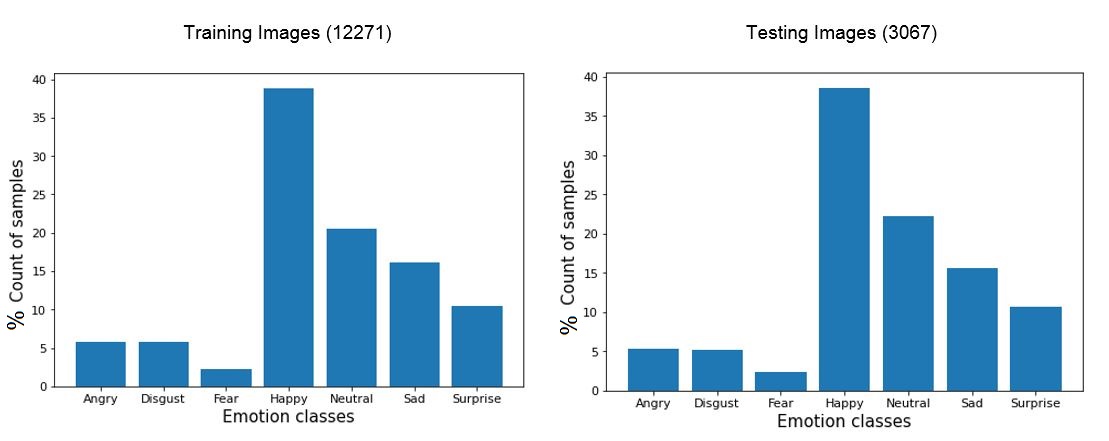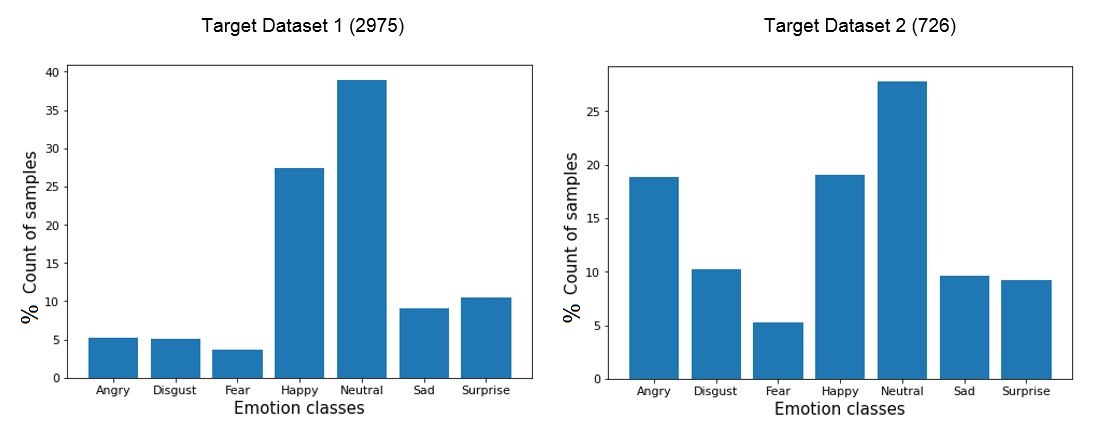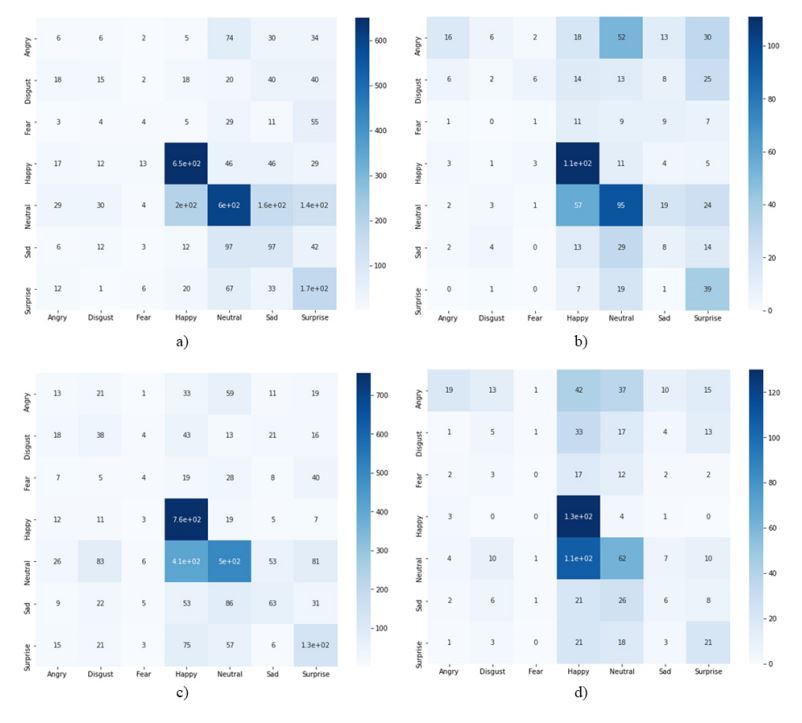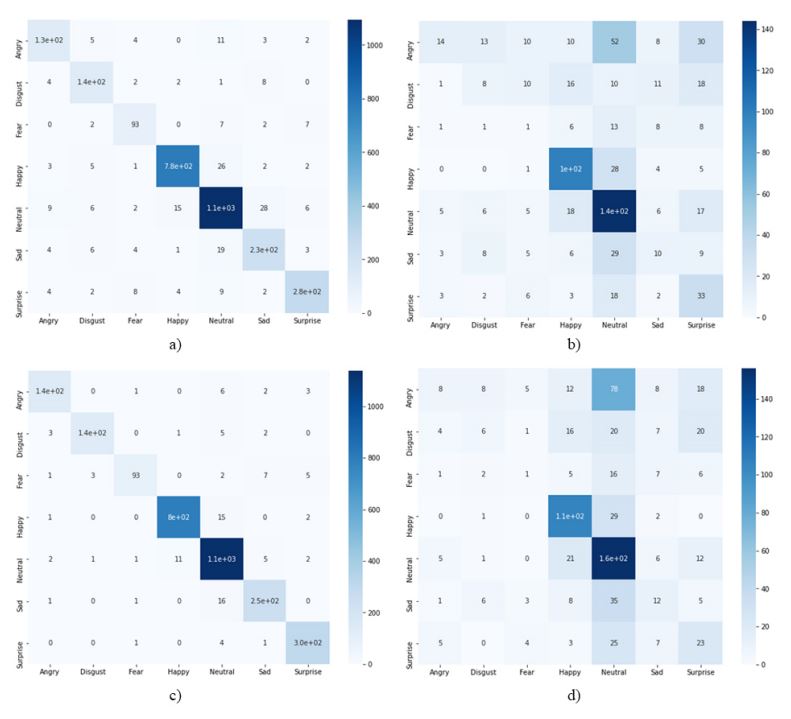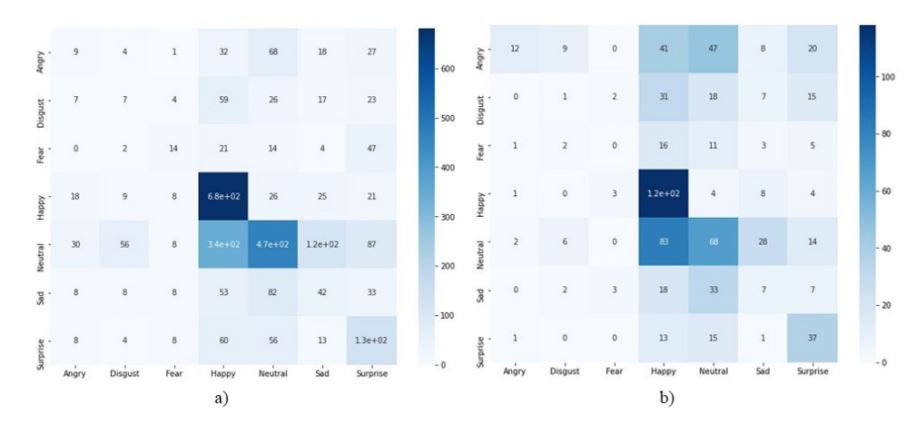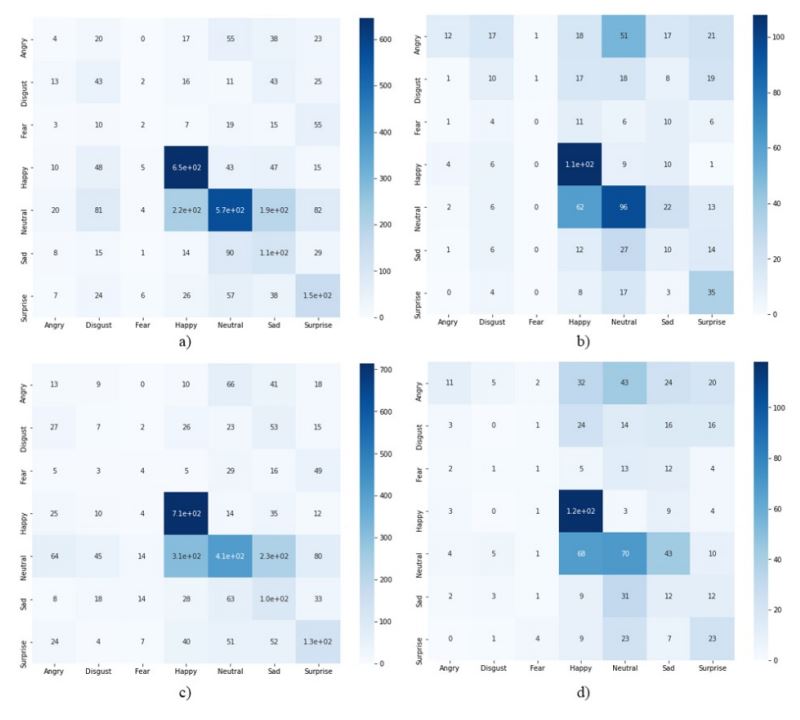Introduction
Facial expression analysis is a domain of interest in deep and transfer learning. The way in which human beings express their emotions has always been a topic of interest in psychological study. External factors have always proven to play a major role as different groups of people show different reaction to the same stimuli, and the way of their emotional expression sets them apart from any other group of interest. The common factors in this change of expressions are observed as gender, cultural influences, age, and the environment. Expression of the commonly observed emotions is specific to the individuals, based on their personality traits. If the training data is an unbiased sample of an underlying distribution, then the learned classification function will make accurate predictions for new samples. However, if the training data is not an unbiased sample, then there will be differences between how the training data is distributed and how the test data is distributed. This becomes the major challenge in domain adaptation. In this problem, our main focus is the facial expression recognition, as the reaction to a stimulus is first observed through face. As cultural factors influence the display of emotions, and we are dealing with the Indo-Pak ethnicity, we show how an ethnicity-specific classifier is built using the target domain data that is unlabeled. The assumptions made by our proposed method will not be based on specific features used for emotional representation, so the proposed solution can be applied to a different kind of data also. We propose to use Cycle-GAN for the purpose of mapping source domain to target domain, and conduct the comparative analysis with results of conventional GAN model. Furthermore, we applied feature-space domain adaptation to our problem, which resulted in significant improvements.
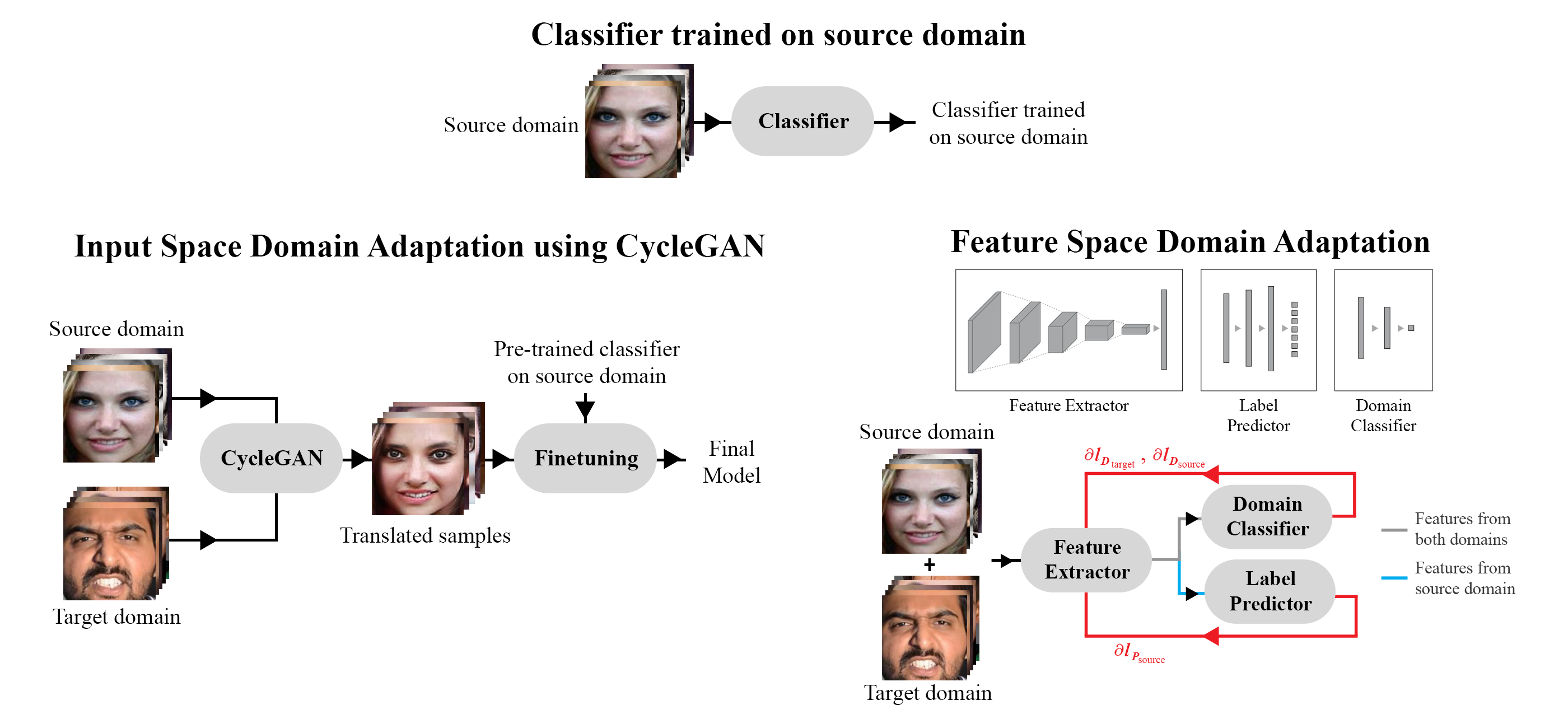
Dataset
Used RAF_DB as sourced dataset and Self collected Pakistani facial images as target dataset

Source Dataset
Real-world Affective Faces Database (RAF_DB) contains 15338 coloured images of westren facial expressions, we are using only seven classes although RAF_DB contains more than seven classes and around 30K images.
Target Dataset
We have collected around 4000 coloured Pakistani facial expression images
Experiments and Results
- Unsupervised Domain Adaptation using WGAN — WGAN results were not useable. So this approach was discontinued.
- Semi-supervised Domain Adaptation using CycleGAN.
- Feature Space Unsupervised Domain Adaptation.
We have used two target datasets in our experimentation. The first dataset is used in domain adaptation process and second dataset is kept unseen in all the ways for testing purposes. This was done to ensure model performance consistency on target domain. We used two classifiers in our experimentation. One is VGG16 pre-trained on ImageNet Dataset and second is ResNET18 pre-trained on ImageNet Dataset. These classifiers were trained on source domain and their accuracies on source domain are below.
Baseline results
Source Domain Accuracy Results
| Classifier | Source Domain Training Accuracy | Source Domain Testing Accuracy |
|---|---|---|
| VGG16 | 94.8 | 79.45 |
| ResNET18 | 92.3 | 80.17 |
In our experimentation, we first evaluated our classifiers (VGG16 and ResNET18) on target domain without doing any kind of domain adaptation. The baseline results for the classifiers used are provided in following table
Target Domain Accuracy Results
we first evaluated our classifiers (VGG16 and ResNET18) on target domain without doing any kind of domain adaptation.
| Classifier | Target Dataset 1 Accuracy (Unseen) | Target Dataset 2 Accuracy (Unseen) |
|---|---|---|
| VGG16 | 50.92 | 37.51 |
| ResNET18 | 50.75 | 33.51 |
Direct Fine-tuning on Target Dataset Accuracy
Then in our next experiment, we fine-tuned our classifiers directly on target domain to get an upper bound of accuracies on target domain for each classifier.
| Classifier | Target Dataset 1 Accuracy (Used in Fine-tuning) | Target Dataset 2 Accuracy (Unseen) |
|---|---|---|
| VGG16 | 92.23 | 42.75 |
| ResNET18 | 96.47 | 43.03 |
Baseline Results Confusion Matrix
Confusion Matrices for baseline results. (a) VGG16 results on Target Dataset 1, (b) VGG16 results on Target Dataset 2, (c) ResNET18 results on Target Dataset 1, (d) ResNET18 results on Target Dataset 2
Fine-tuned on Target Domain Confusion Matrix
Classifiers fine-tuned on target dataset directly. (a) VGG16 results on Target Dataset 1, (b) VGG16 results on Target Dataset 2, (c) ResNET18 results on Target Dataset 1, (d) ResNET18 results on Target Dataset 2
Baseline Trained Models
Baseline trained models can be found here.
WGAN
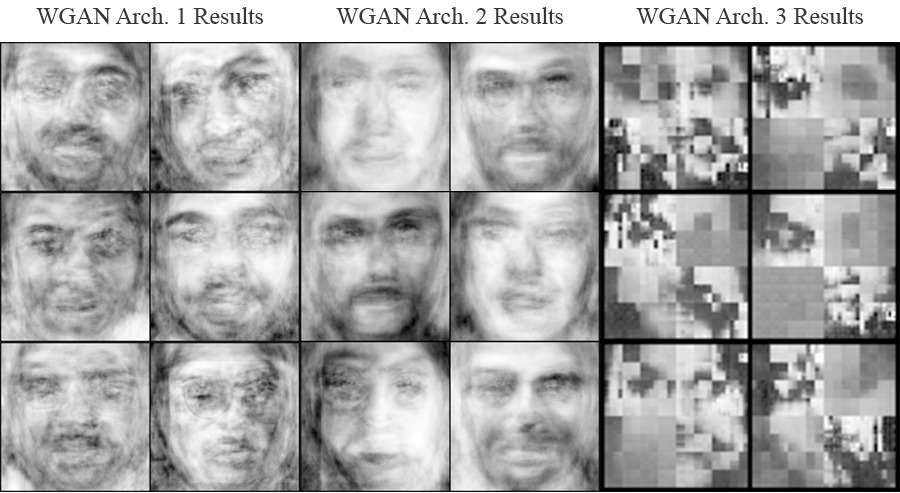
Training Specifications of WGAN Models
| Specifications | WGAN Arch. 1 | WGAN Arch. 2 | WGAN Arch. 3 |
|---|---|---|---|
| Model Type | Linear | Linear | Convolutional |
| Training Epochs | 10K | 1K | 7.5K |
| Training Time | 7 Days | 3 Days | 7 Days |
WGAN Trained Models
WGAN Trained models are available here.
CycleGAN
Fine Tune CycleGAN
Using CycleGAN translated images, we fine-tuned our classifiers and accuracy score on both target datasets are below.
| Classifier | Target Dataset 1 Accuracy (Used in Fine-tuning) | Target Dataset 2 Accuracy (Unseen) |
|---|---|---|
| ResNET18 | 48.13 | 33.42 |
CycleGAN Translated Results
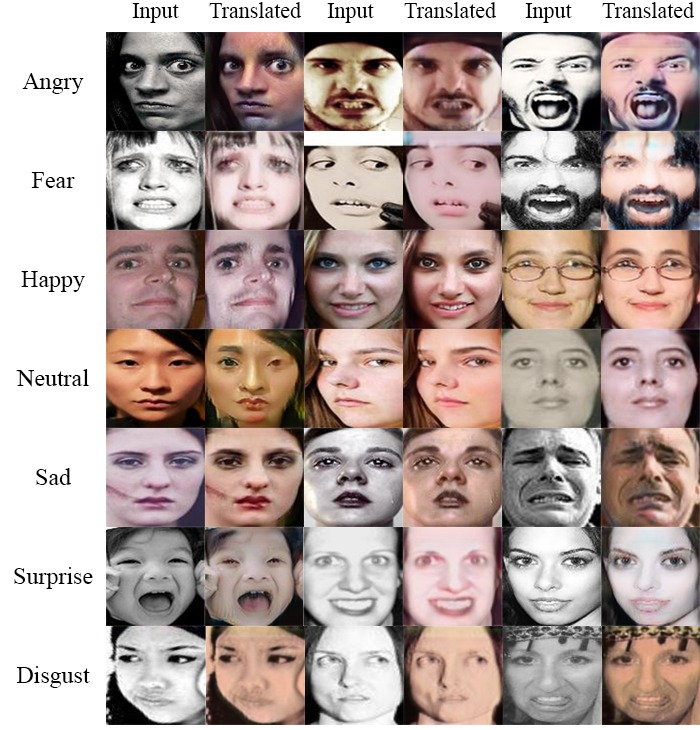
Fine-tuned on CycleGAN Translated Samples Confusion Matrix
Classifiers fine-tuned on CycleGAN translated samples. (a) ResNET18 results on Target Dataset 1, (b) ResNET18 results on Target Dataset 2
CycleGAN Trained Models
CycleGAN trained models are available here.
Feature Space Unsupervised Domain Adaptation CycleGAN
We retrained both the classifier with an additional domain classifier network in them. This domain classifier network help in making the features used in classifier independent of any domain information.
| Classifier | Target Dataset 1 Accuracy (Used in Fine-tuning) | Target Dataset 2 Accuracy (Unseen) |
|---|---|---|
| VGG16 | 51.36 | 37.37 |
| ResNET18 | 46.72 | 32.41 |
Trained using Feature Space Domain Adaptation Confusion Matrix
Classifiers trained using feature space domain adaptation approach. (a) VGG16 results on Target Dataset 1, (b) VGG16 results on Target Dataset 2t, (c) ResNET18 results on Target Dataset 1, (d) ResNET18 results on Target Dataset 2
Feature Space Domain Adaptation Models
Feature Space Unsupervised Domain Adaptation models are available here.
